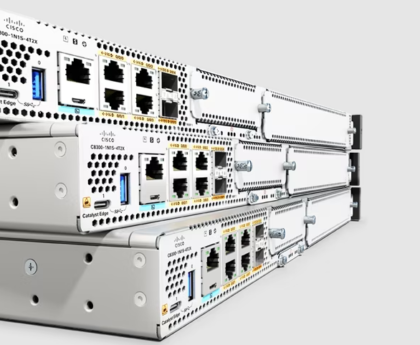Can AI-generated poetry replace humans and their emotions? Art and creativity have always been seen as a uniquely human domain. From Monet’s Water Lilies to Shakespeare’s sonnets, human imagination and creative expression have always been celebrated. However, with the emergence of artificial intelligence (AI), the boundaries of creativity are being pushed in ways we never imagined.
Today, AI has become more than a technological tool; it has become a creative collaborator. Its role in several creative fields, such as music, art, and literature, has increased significantly in recent years. AI-generated poetry is one such innovation that has gained growing interest.
However, even as AI-generated poetry becomes more sophisticated, the question remains: can AI truly replicate human creativity in poetry? This question has sparked debates among scholars, poets, and AI developers, with no clear answer.
The Emergence of AI in Creative Expression

AI’s evolution in creative tasks has been a fascinating journey. Initially, AI was only used for routine tasks like scanning data. However, with time, AI has been integrated into complex creative tasks like music composition, journalism, and artistic design.
For instance, Amper Music, an AI-based music software, allows users to create unique music by specifying the genre, mood, and instruments they want to hear. Additionally, AI algorithms have been used to create art pieces that have sold for millions of dollars.
Moreover, as an extension of its application in other creative fields, AI-generated poetry is a natural progression. AI algorithms have been developed to produce a sonnet from scratch, taking inspiration from a given prompt. Some of these algorithms can even analyze previous poetry works in a particular genre or style to generate new poetry that imitates these works.
AI-generated poetry is an exciting innovation that the poetry world is only beginning to explore. Integrating AI into the creative world has transformed traditional notions of creativity and artistic expression. However, whether AI can replicate human creativity in poetry remains a subject of intense debate. Nonetheless, there is no doubt that AI will continue to expand creative possibilities in poetry and other artistic fields.
The Role of AI in Redefining Creativity: Artistic Implications of AI-Generated Poetry
AI-generated poetry has garnered admiration and criticism in the literary scene recently. Some claim that it is an innovative and efficient tool that can aid authors in their creative endeavors, while others argue that it undermines the importance of human imagination and intuition. However, what is the true impact of AI on the definition of creativity in poetry?
Firstly, AI-generated poetry challenges the traditional view of creativity as a solely human endeavor. AI can analyze and replicate human patterns and language, producing poems that closely resemble those created by human poets. However, the question remains whether AI-generated content can be classified as “creative” since it lacks human-generated poetry’s subjective experiences, emotions, and intentions. Thus, AI may require a redefinition of creativity, as its methods and outputs differ from traditional poetic practices.
Furthermore, AI-generated poems have unique aesthetic and thematic qualities that differentiate them from human-generated poetry. AI programs can produce innovative forms and styles that may be impossible for humans to conceive, leading to creative writing that subverts conventional poetic forms and attracts new audiences. Additionally, AI-generated poetry does not have inherent biases or preferences towards specific themes or topics, allowing for diverse and unexpected subject matter. These unique qualities offer new opportunities for artistic expression that may not have been possible before the advent of AI technology.
Lastly, the intersection of human and AI creativity leads to exciting new collaborations and possibilities in the arts. Humans can use AI-generated poetry as inspiration or incorporate it into their works, creating innovative new poetic forms and styles. Cooperation between humans and AI can result in unexpected and innovative takes on established poetic forms, inspiring unique creative expression and experimentation.
The rise of AI-generated poetry raises questions about traditional definitions of creativity. However, it also presents exciting new opportunities for innovative forms of artistic expression that benefit from the intersection between human and AI creativity. The relationship between AI and poetry may require further exploration, but with so much potential for creativity, it is a space worth exploring.
Challenges and Successes
When it comes to training AI for poetic tasks, there are several technical challenges. One major obstacle is the complexity of language and the nuances of emotional expression. AI systems rely heavily on data, and language data sets aren’t always diverse or inclusive enough to capture the entirety of human emotions. Moreover, interpreting and conveying emotions is not easy, even for humans, and AI systems still have a limited understanding of how to process emotions and express them effectively.
Recent successes and breakthroughs in AI-generated poetry have been seen despite these challenges. For example, an AI model called “Poet Assistant” developed by researchers from Stanford University wrote strikingly human-like sonnets. Another example is “Deep-spare,” an AI-powered program that can generate Shakespearean sonnets so convincing that it is difficult to tell if they are human-generated.
Replicating Human Creativity
That said, AI still falls short of human creativity in several areas. For instance, an AI model can generate a compelling poem with profound political, social, or emotional commentary. However, it still lacks originality and the nuanced understanding of human culture that human poets possess. As such, AI-generated poems can sometimes feel shallow or fail to convey the intended meaning effectively.
Many tools are in the market to replicate human creativity and integrate it well into AI-generated content. During our research, we tested several tools like Easy AI Checker, Writer, Scribbr, Copyleaks, and others. However, the Easy AI Checker is the best to detect AI-generated text patterns. It can easily see the AI patterns in the text and provides the valuable option of “Fix” to humanize the content with just one click. Do give it a try and view their budget-friendly prices.
Moving forward, researchers are attempting to replicate human creativity in AI-generated poetry by diving deeper into the role of data, algorithms, and machine learning in creative processes. Data plays an essential role in training AI models for creative tasks. Researchers are developing new techniques for collecting better quality and more comprehensive data sets to prepare AI models better. Additionally, advancements in machine learning algorithms enable AI models to process and understand data in more complex ways than possible.
Several noteworthy cases regarding particular examples of AI-generated poems have stirred emotional responses. For instance, an AI model developed by Google generated a poetic verse that made those reading it experience an “Aha moment” of insight. Another remarkable example is an experiment that taught an AI system to recognize human emotions and generate poetry that resonated emotionally. While AI-generated poetry still has its limitations, researchers are working tirelessly to improve the quality and human likeness of AI-generated poems.
The Ethics of AI-Generated Art: Implications for Human Creativity and Responsibility
Artificial intelligence (AI) has revolutionized art, offering creators many new techniques, tools, and mediums to express their ideas. However, as AI software grows more advanced, it begs the question – who owns the art created by a machine? Are machines capable of creativity, and if they are, do they hold any artistic or moral value?
The ethical concerns surrounding AI-generated art are profound. It is not just about copyright but also about the role of machines in creating something of cultural value. For instance, can an algorithm produce something with deeper meaning, an emotional connection, and aesthetic appeal? These are questions that need to be addressed. Moreover, one cannot overlook the fact that AI-generated art requires large datasets to train neural networks. This raises concerns about data privacy if personal information is being used without consent.
The line between human and machine creativity is becoming increasingly blurred with the rapid pace of technological advancements. However, we must ask ourselves whether the two forms of creativity can or should be indistinguishable. Does that mean that when an artist uses an AI tool to create the art, it is no longer their creative work?
The responsibility of creators and consumers in embracing AI-generated poetry is crucial. Creators must evaluate the ethical implications of their work and document where the AI has assisted in creating the artwork. As consumers, we need to educate ourselves on how AI can shape modern art, understand the efforts invested, and appreciate the challenges creators face. In essence, the art world must adapt to the growing blurring of lines between human and machine talents and embrace the new opportunities this brings.
The Future Landscape: AI-Generated Poetry Place in the Literary World and Collaborative Potential

With the rapid advancement of artificially intelligent (AI) technology, the future of AI-generated poetry seems to be promising. While AI-generated poetry is currently in its infancy, the possibilities for its application in the literary world are endless. Machines producing poetic art that can resonate with readers’ emotions raises exciting questions about the significance of human art. Some critics argue that AI-generated poetry lacks emotional depth, while others believe that machines can capture emotions just as well as humans.
Collaboration between humans and AI in the poetic world appears to be the way forward. Machines can generate poems faster than their human counterparts and, as such, can help reduce the time necessary for the creative process to bear fruit. Humans can then fine-tune the poetry, correcting tone and word choices that machines might miss. By combining the best of human creativity with the speed and efficiency of engines, literary endeavors can benefit from the strengths of both parties simultaneously.
AI’s potential to inspire and augment human creativity is mind-boggling. AI can identify the most commonly utilized elements by taking existing poetry, breaking it down into minor units, and analyzing the linguistic structures. When composing a piece of poetry from scratch, the machine’s algorithm can use these patterns for inspiration and produce original yet structured pieces. Augmenting human creativity with such technology could start a new revolution in literature and art.
The future of AI-generated poetry remains intriguing in terms of its place in literature. Collaboration between humans and machines seems like the most promising way forward, and AI’s potential to inspire and augment human creativity appears almost boundless.
Conclusion
As we embrace the era of artificial intelligence, it is crucial to understand the artistic implications of AI-generated poetry. On the one hand, witnessing the incredible merging of machine and human intelligence is fascinating. AI can produce poetry that rivals human-generated content in depth, emotion, and creativity. However, we must also acknowledge that human ingenuity and originality remain paramount. The beautiful nuances and subtleties of human language, emotion, and consciousness cannot be replicated by AI. Thus, we must think deeply about how AI-generated poetry will evolve and how we can preserve the human touch in creative expression. As we continue to explore the ever-changing landscape of creativity in the age of AI, we must embrace both the potential and limitations of these new technologies.




